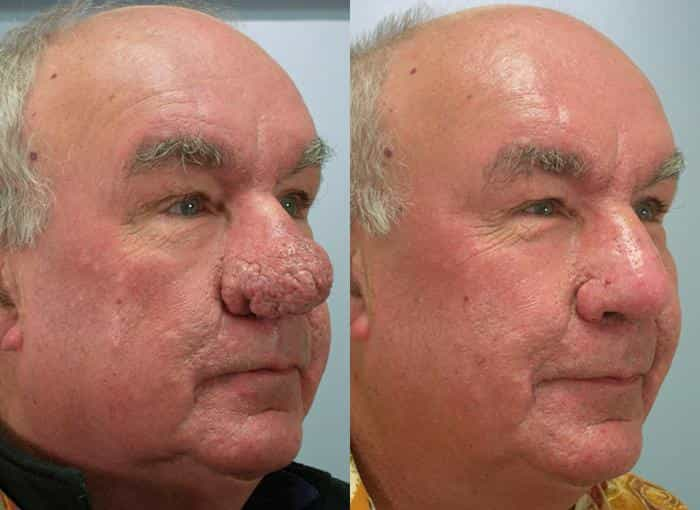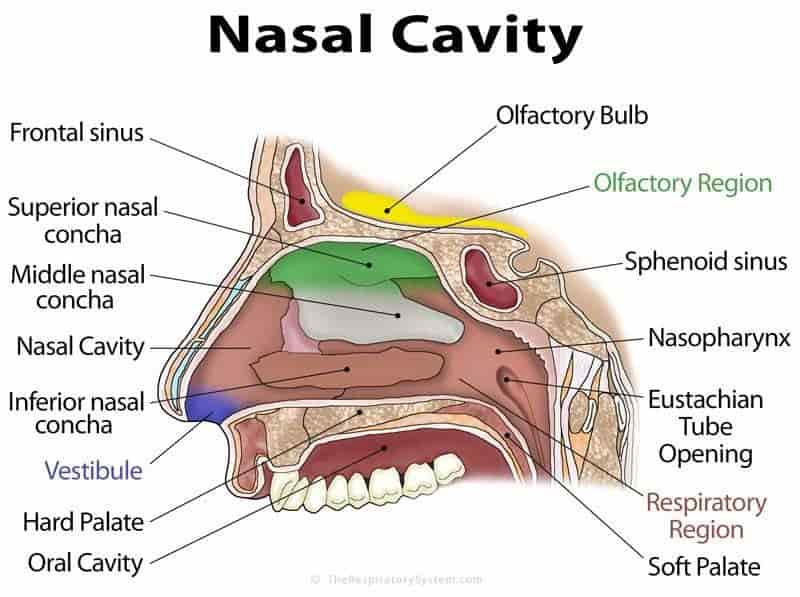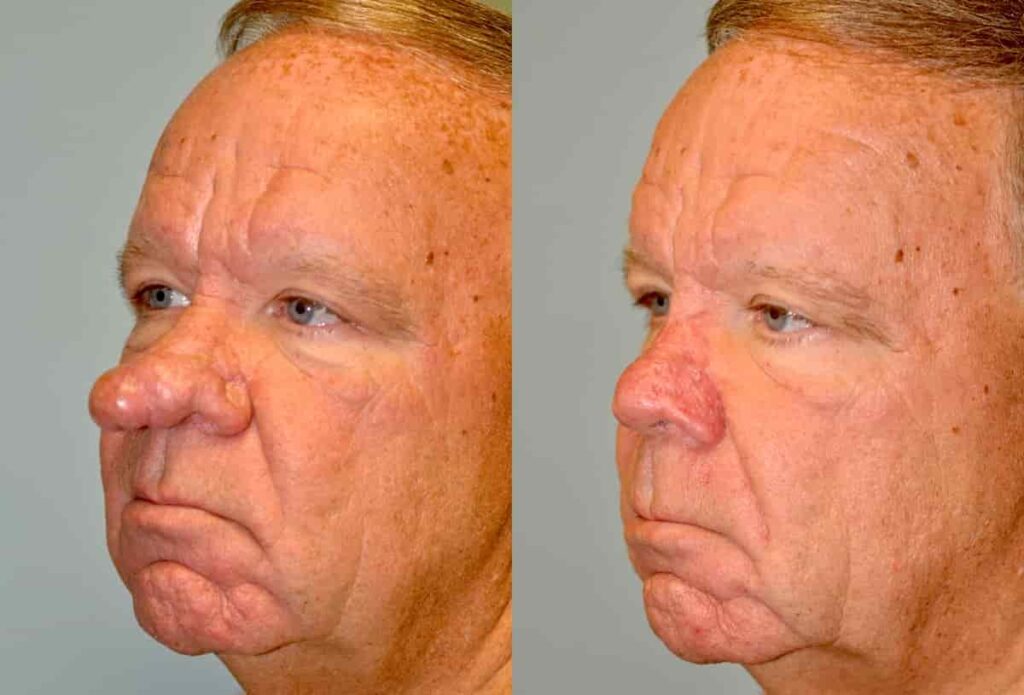Alcoholic Nose (Rhinophyma): What Is? How Is It Treated?
Contrary to popular belief, Alcoholic Nose does not occur with the use of alcohol.
Rhinofima (alcohol nose) disease also has different names, and these can also be called “whiskey nose”, “gin blossom”, “taurus nose” and “potato nose”.

What Will We Learn?
What Is Rhinophyma (Alcoholic Nose)?
Rhinophyma disease is a type of disease that progresses with the deformity of the tip of the nose and is generally observed in light-skinned men.
One of the biggest causes of rhinophyma disease is thought to be rosacea (rose disease).
However, there are some differences between rosacea and Rhinophyma disease.
These differences are listed below:
- Rosacea disease gradually regresses, but in Rhinofima, if the disease is not treated, it progresses over time.
- While rosacea types are observed at almost equal rates in men and women, Rhinophyma is more common in men.
- While rosacea tends to occur at an earlier age, Rhinophyma is a condition usually observed in older people.
The nose of people with this disease has a structure that contains larger, widespread red areas, perforated, bumpy areas in the form of bubbles compared to other people.
The exact cause is not yet fully known.
It has been found that the bone and cartilage tissue of the nose is generally not affected in rhinophyma disease.
There are sebaceous glands in the skin, and these glands perform functions in the body such as the immune system, endocrine system and preventing bleeding.
In rhinophyma disease, these sebaceous glands in the skin and the supporting tissue in its lower part are affected and undergo Hypertrophy (increase in the volume of a tissue or organ due to growth in cells).
Rhinophyma disease is thought to occur as a result of exposure of the sebaceous glands and hair follicles in the nose to infection with parasites and bacteria in the mouth of these parasites.
What Are the Symptoms Of Rhinophyma (Alcoholic Nose)?
These symptoms are listed below:
- Swelling of the nose: It is one of the features seen in patients with rhinophyma. In patients with rhinophyma, an unusually large nose structure occurs.
- Gradual Enlargement of the Nose: In patients with rhinophyma, the nose does not grow in a short period of 1-2 weeks. These growths usually take years. It is understandable when compared with photos from 3 to 4 years ago. That is, the nose grows gradually.
- Increase in the Number of Sebaceous Glands in the Nose: Another symptom seen in rhinophyma patients is an increase in the number of sebaceous glands in the patient’s nose.
- Enlargement of Nose Pores: Another symptom observed in patients with rhinophyma is the enlargement of the pores in the nose due to hyperplasia (enlargement of any tissue or organ in the human body due to the increase in the number of cells).
- Redness of the Nose: The nose turns red as a result of inflammation (the body’s protective response to any harmful stimulus) due to the development of parasitic and bacterial infections in the skin in patients with rhinophyma.
- Thickening of the Nasal Skin: Another symptom observed in patients with rhinophama is the thickening of the skin on the nose of the patient.
- Loss of Nose Shape: As a result of the above-mentioned reasons that develop in the nose in rhinophyma patients, the shape of the nose begins to change. Thus, over time, the nose begins to lose its shape.
- Coarse, Convoluted Nose: Another symptom observed in patients with rhinophama is the rough, curved appearance of the patient’s nose.

How Is Rhinophyma (Alcoholic Nose) Treated?
First, treatment begins with the treatment of the underlying rosacea disease.
The patients are tried to be treated with antibiotics and retinoids.
However, some patients do not respond to these treatment options.
Apart from this, there are also drug treatments that can be applied in the treatment of rhinophyma.
However, the best treatment used in the treatment of rhinophyma with a long-term and successful outcome is surgical treatment.
Early surgical treatment is very important for patients with rhinophyma to avoid any defect in the nasal tissue.
How Is Rhinophyma Surgery Done?
The aim of surgical treatments in rhinophyma (Alcoholic Nose) is to remove the enlarged and thickened lump of raised tissue.
In this way, it is tried to ensure that the nose regains its former functions.
It is important for the patient to have surgery as soon as possible so that the nasal structure is not deteriorated.
Surgical techniques that can be used in rhinophyma are listed below:
- Removal of fibrous tissues using surgery
- Cryotherapy: It is a treatment method using liquid nitrogen (element). It is performed by applying nitrogen on the lesion with a spray or cotton ball.
- Dermabrasion treatment: It is the process of thinning the upper layer of the skin by sanding, which is used to remove all irregularities, spots, wrinkles, acne and scars on the skin.
- Electrocautery is a device that works by burning or cutting the tissues by burning, and thereby enabling the surgeries to be bloodless. This instrument with a pen-like tip can be used in the treatment of Rhinophyma.

What Are The Causes (Risk Factors) Of Rhinophyma?
The causes of rhinophyma disease have not yet been fully elucidated.
Although it was noticed that it was observed frequently in people between the ages of 40 and 60 who consumed alcohol in the past, as a result of subsequent research, no situation was found to associate alcohol with Rhinophyma disease.
However, alcohol and caffeine can cause blood vessels to dilate. Excessive alcohol intake can cause this disease to progress rapidly.
Apart from all these, the risk factors are:
- This disease is more common in men
- Being fair skinned
- Being between the ages of 40 – 60
- Having a family history of rosacea
- Having a family history of Rhinophyma disease
Which Doctor Should Be Consulted For Rhinophyma Disease?
The main department dealing with rhinophyma (Alcoholic Nose), diagnosing and treating the disease is the Dermatology (Skin and Venereal Diseases) department.
If the above symptoms are present, the patient applies to the dermatologist with complaints.
The specialist physician listens carefully to the patient’s complaints.
The physician performs the physical examination upon complaints and requests the necessary examinations.
As a result, it establishes the diagnosis of the disease.
Rhinophyma is not a fatal disease for the human body.
However, since it causes problems for patients aesthetically, treatment is absolutely necessary.
In the presence of conditions such as enlargement, swelling and redness of the patient’s nose, it is beneficial to see a specialist.
You can take a look at our article about the Gardenia plant, which gives beauty to your homes with its scent.
